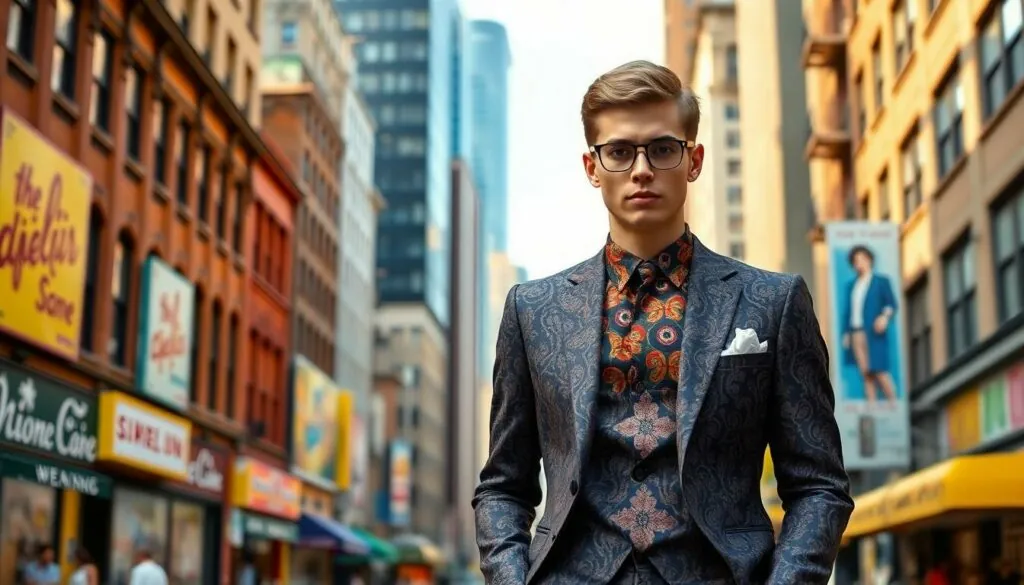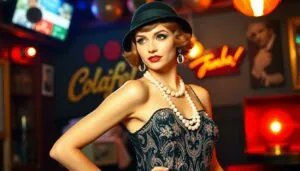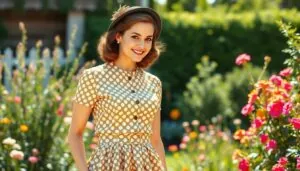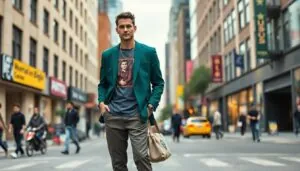The 1960s was a decade that turned the fashion world upside down and inside out. Gone were the days of stiff collars and boring suits; in came bold colors, funky patterns, and a whole lot of attitude. Men’s fashion in this era wasn’t just about looking good—it was a statement. It screamed freedom, individuality, and a hint of rebellion, all while sporting some seriously questionable hairstyles.
Table of Contents
ToggleOverview of 60s Men’s Fashion
Men’s fashion in the 1960s showcased a remarkable evolution from previous decades. Styles transitioned from conservative silhouettes to vibrant aesthetics. Bold colors became a staple, replacing muted tones prevalent in the 1950s. Funky patterns, such as paisley and geometric designs, emerged, reflecting a cultural shift towards experimentation in fashion.
Tailoring also underwent significant changes. Slim-fitting suits with narrow lapels replaced more traditional cuts. The introduction of the Mod style highlighted an appreciation for both sophistication and youthful rebellion. This movement encouraged the use of eye-catching accessories, including ties and pocket squares, that added an individual touch to outfits.
Casual wear became increasingly popular, with elements like turtlenecks and colorful polo shirts making their way into everyday wardrobes. Denim jeans gained prominence, often paired with brightly colored jackets. In addition, unconventional hairstyles, such as long hair and sideburns, accompanied these fashion choices, emphasizing personal expression.
Footwear also saw innovation during this time. Smart loafers, go-go boots, and platform shoes provided varied choices, aligning with the era’s bold trends. Designers like Pierre Cardin and Mary Quant played crucial roles in shaping these styles, creating a vibrant fashion landscape.
The 1960s marked an important period that encapsulated a move towards freedom and individuality in men’s fashion. As societal norms evolved, so too did the clothing choices that expressed these shifts. The decade’s emphasis on experimentation paved the way for future trends, solidifying the 1960s as a seminal era in fashion history.
Key Styles of the 60s
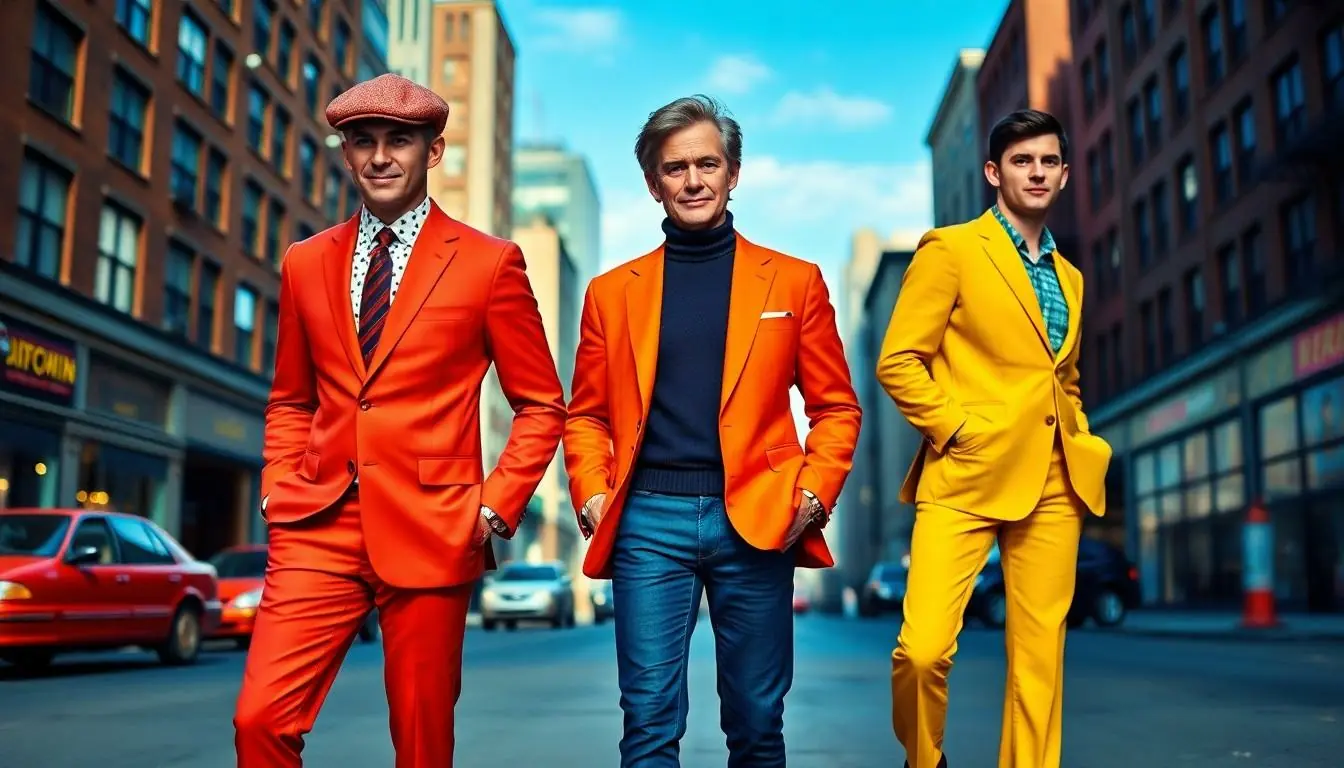
Men’s fashion in the 1960s featured diverse styles that revolutionized personal expression and cultural identity.
The Mod Look
The Mod look embodies a youthful, sharp style characterized by tailored suits and vibrant colors. Slim-fitting jackets paired with skinny ties offered a sleek aesthetic. Accessories like flat caps and bold footwear elevated the overall appearance. Designers like Pierre Cardin popularized the look, emphasizing clean lines and geometric patterns.
Essential to this style, the Mod movement celebrated individuality and a break from convention through experimentation. Gender fluidity began to surface, influencing how men approached fashion. Overall, the Mod look marked a departure from the past, creating a refined yet rebellious statement.
Casual Wear
Casual wear during the 60s transformed men’s everyday attire, making comfort and style equally important. Turtlenecks became a staple, often paired with blazers or jeans for a relaxed yet polished vibe. Colorful polo shirts reflected the playful spirit of the era, shaping a more approachable look. Denim jeans transitioned from workwear to casual chic, signaling a cultural shift regarding leisure fashion.
Footwear like loafers and beatnik-style shoes complemented these outfits, allowing men to express casual sophistication. Popular figures further influenced casual styles, making them part of mainstream culture. Ultimately, this evolution in casual wear showcased a pivotal change towards practicality and self-expression.
Iconic Fashion Figures
The 1960s showcased influential designers and celebrities who shaped men’s fashion. They played critical roles in redefining style and self-expression during this vibrant decade.
Designers Who Influenced 60s Men’s Fashion
Pierre Cardin revolutionized men’s fashion with his avant-garde designs and futuristic ideas. His bold cuts and geometric prints broke from traditional tailoring. Another pivotal figure, Yves Saint Laurent, introduced the smoking jacket, challenging conventional menswear with a touch of elegance and sophistication. Additionally, British designer Mary Quant’s impact on the Mod movement cannot be overstated; her rebellious spirit encouraged experimentation with colors and patterns. These designers embodied the era’s transformative essence, driving the cultural shift toward individualism and freedom in clothing.
Celebrities Who Represented the Era
David Bowie became an iconic figure in the 60s fashion scene, known for his flamboyant style and daring outfits. His approach inspired a new sense of identity and artistic expression among fans. Also significant was Steve McQueen, often seen in tailored suits and casual styles that epitomized coolness and confidence. The Beatles, too, made a lasting impression, with their evolving looks from mop-top hairstyles to colorful suits reflecting the era’s spirit. Together, these celebrities not only defined contemporary aesthetics but also encouraged the broader cultural shifts taking place within society.
Cultural Influences on Fashion
The 1960s showcased diverse cultural influences that significantly impacted men’s fashion. Music and political currents shaped styles, encouraging self-expression.
Music and Its Impact
Music genres such as rock and roll, folk, and Motown set the tone for the decade’s fashion. Rock icons like Jimi Hendrix and The Beatles inspired the Mod look with their vibrant outfits and bold patterns. Folk music’s earthy aesthetic introduced more relaxed styles, emphasizing comfort alongside self-expression. Psychedelic rock popularized vivid colors and intricate prints, inviting experimentation in everyday wear. Notably, music festivals became hotspots for showcasing unique styles, merging fashion with artistic expression. The influence of music on fashion during this era highlighted the connection between cultural movements and personal identity.
Political Climate and Style Changes
The political landscape of the 60s drove significant changes in menswear as well. Movements advocating for civil rights and anti-war sentiments shaped expressive fashion choices. Men increasingly embraced clothing that symbolized resistance, such as denim jackets and graphic tees, cultivating a sense of unity and rebellion. The counterculture movement championed non-conformity, which led to the popularity of bohemian styles. Young men often adorned themselves in bright colors and layered clothing, reflecting their desire for freedom. Political protests also encouraged the embrace of casual attire over formal wear, marking a dramatic cultural shift towards individualism and comfort.
The 1960s marked a pivotal moment in men’s fashion where individuality and self-expression took center stage. The era’s bold colors and innovative styles reshaped traditional norms, allowing men to embrace a more vibrant and eclectic wardrobe. Influential designers and cultural icons played a significant role in this transformation, encouraging experimentation and a break from convention.
As music and political movements intertwined with fashion, men’s clothing became a canvas for personal expression and social commentary. This decade not only revolutionized style but also laid the groundwork for future generations to explore their identities through fashion. The legacy of 60s men’s fashion continues to inspire today, reminding us of the power of clothing as a means of self-expression.

